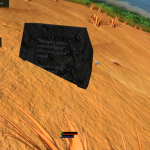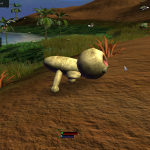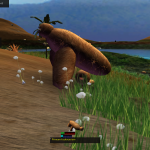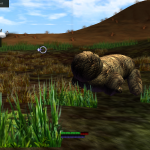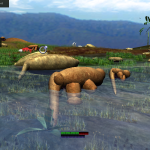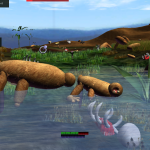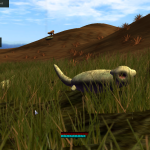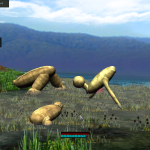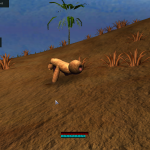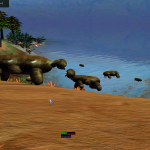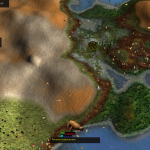 Slowly but surely, it was getting drier and less green inland.
Slowly but surely, it was getting drier and less green inland.
This left wetter, more fertile areas more densely populated. It might have increased populations but with the number of species sitting around 30 and the number of individuals over 700, it seemed like competition wasn’t enough. I do like to think that my rovers had a hand in these large numbers, though.
To get numbers back down and more sustainable, I decided to decrease the water level again. While I waited for levels to go down, I took these.
I toyed around with more ways to make life more difficult for the creatures, including putting up fences, adding and removing climate control machines, etc. The number of species increased as the total population decreased, though. I decided to add a rover to feed creatures with high Energy Capacity – creatures that can store more food and energy in their bodies.
As numbers continued to decrease, I took some time to enjoy the watering hole. It was quickly becoming my favorite area to explore
It was probably because of the water that the creatures were able to survive – water meant the plants would be plentiful. The greenery itself also kept things visually interesting, but that’s not to say the coast wasn’t interesting in its own right.
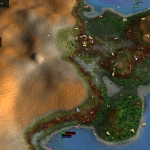 Coastal creatures were just as varied and seemed to have no qualms about exploring inland. As for the large desert areas, there were no large herds. It seemed the animals were most interested in lush areas with food, which makes sense. I did start to wonder whether there would soon be carnivores, though.
Coastal creatures were just as varied and seemed to have no qualms about exploring inland. As for the large desert areas, there were no large herds. It seemed the animals were most interested in lush areas with food, which makes sense. I did start to wonder whether there would soon be carnivores, though.
A quick search through all the species showed that no, there were no carnivores or herbivores, all the species were still Omnivorous. I thought it would be time for another change, though. I lowered the water level to 0.1 and increased the fertility by 0.1. Less water was bad news but extra fertility might be enough to make up for the loss.

